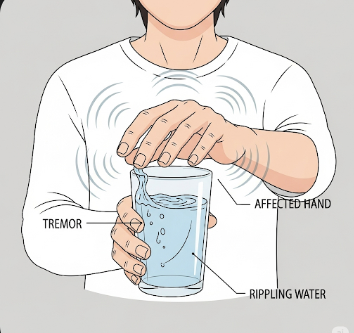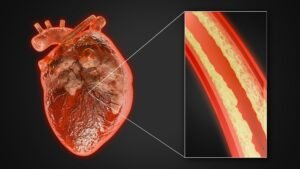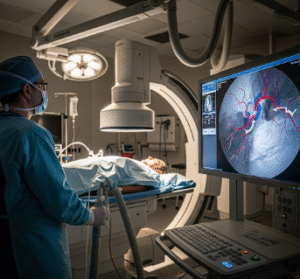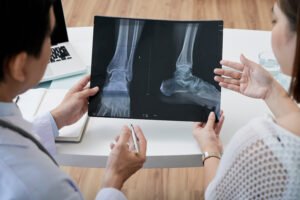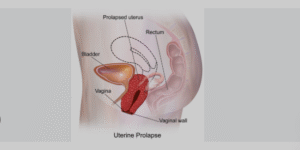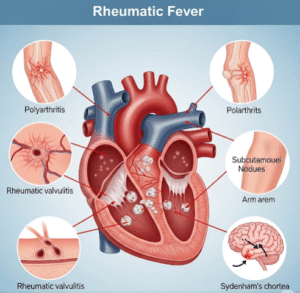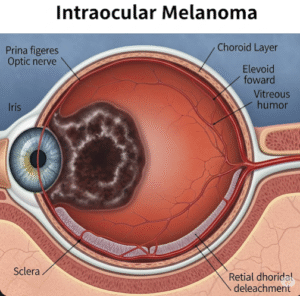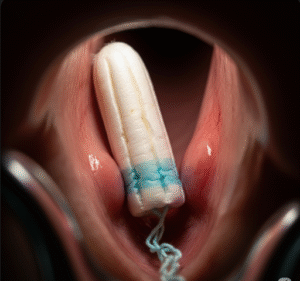Overview
Essential tremor (ET) is a neurological disorder characterized by involuntary, rhythmic shaking, most commonly affecting the hands, but it can also involve the head, voice, legs, or trunk. ET is one of the most common movement disorders, often worsening with age. While not usually life-threatening, ET can interfere with daily activities such as writing, eating, and speaking, leading to functional limitations and emotional distress. In Korea, neurology clinics and specialized movement disorder centers provide comprehensive evaluation, advanced diagnostics, and individualized management plans to help patients maintain function and quality of life.
Highlights:
➤ Involuntary, rhythmic shaking – Typically affects hands and arms
➤ Can interfere with daily tasks – Writing, eating, and personal care
➤ Often progressive but manageable with treatment
Key Facts
➤ Prevalence: Estimated 0.9% of the general population; higher in adults over 65
➤ Age affected: Can begin at any age, often in mid-adulthood or later
➤ Gender: Affects both males and females equally
➤ Impact: May cause functional disability, social embarrassment, and anxiety
➤ Prognosis: Chronic but manageable; tremor may worsen over time but does not typically shorten life expectancy
What is Essential Tremor?
Essential tremor is a movement disorder resulting from abnormal activity in the brain regions controlling movement, particularly the cerebellum and its connections. Unlike tremors caused by Parkinson’s disease, ET is usually:
- Action tremor: Occurs during voluntary movement, such as lifting a cup or writing
- Postural tremor: Present when maintaining a position against gravity, like holding arms outstretched
ET is typically bilateral, affecting both hands, and may progress slowly over years. Family history plays a significant role; many cases are genetically inherited in an autosomal dominant pattern.
Highlights:
➤ Action and postural tremors distinguish ET from resting tremors
➤ Genetic predisposition is common
➤ Progressive but non-life-threatening
What Symptoms Are Related to Essential Tremor?
➤ Hand tremors: Most common; noticeable during tasks like writing, drinking, or using utensils
➤ Head tremors: Shaking or nodding movements
➤ Voice tremors: Can cause quivering or unsteady speech
➤ Leg or trunk tremors: Less common but may affect balance or walking
➤ Functional difficulties: Trouble with fine motor tasks, dressing, or eating
➤ Emotional impact: Embarrassment, anxiety, and social avoidance
Highlights:
➣ Tremors are action-based and worsen with voluntary movement
➣ Symptoms vary in severity and affected body parts
➣ Emotional effects may be significant even if tremor is mild
What Causes / Possible Causes
➤ Genetic factors: Family history of ET is the strongest risk factor
➤ Abnormal brain activity: Dysregulated cerebellar and thalamic pathways
➤ Age-related changes: Risk increases with aging, possibly due to neuronal changes
➤ Environmental triggers: Stress, fatigue, caffeine, and certain medications may exacerbate tremor
➤ Other medical conditions: Thyroid disorders, stroke, or peripheral neuropathy may mimic or worsen ET
Highlights:
➣ ET is primarily genetic with progressive age-related expression
➣ Lifestyle and environmental factors may exacerbate tremors
When Should I See My Doctor?
➤ Persistent or worsening tremor – Interfering with daily life
➤ Functional impairment – Difficulty with writing, eating, or dressing
➤ Family history of tremor – Early assessment may guide management
➤ Differential diagnosis needed – To rule out Parkinson’s disease or other neurological disorders
➤ Emotional or social impact – Tremor causing stress, anxiety, or avoidance
Highlights:
➣ Early evaluation by a Korean neurologist or movement disorder specialist ensures accurate diagnosis
➣ Timely management can prevent functional decline and improve quality of life
Care and Treatment
➤ Lifestyle modifications: Reduce caffeine, manage stress, and ensure adequate sleep
➤ Occupational therapy: Strategies for daily tasks, adaptive utensils, and writing aids
➤ Medications:
- Beta-blockers (e.g., propranolol): Reduce hand tremors in many patients
- Anti-seizure medications (e.g., primidone): Alternative therapy for severe tremor
➤ Botulinum toxin injections: For head or voice tremors in selected cases
➤ Surgical interventions: Deep brain stimulation (DBS) or thalamotomy for refractory tremor
➤ Monitoring: Regular follow-up to adjust medications and monitor progression
Highlights:
➣ Most ET cases respond to medications and lifestyle adjustments
➣ Advanced therapies are reserved for severe or disabling tremor
Treatment Options in Korea
Medical Treatments:
➤ Neurology clinics: Comprehensive evaluation, tremor analysis, and imaging
➤ Prescription medications: Beta-blockers, primidone, or other anti-tremor agents
➤ Lifestyle counseling: Stress management, caffeine moderation, and adaptive strategies
Advanced Procedures:
➤ Deep brain stimulation (DBS): For severe, medication-resistant tremor
➤ Thalamotomy: Targeted surgical procedure for refractory cases
➤ Rehabilitation and support: Physical and occupational therapy for fine motor tasks
Rehabilitation & Follow-Up Care:
➤ Education on daily task strategies and adaptive devices
➤ Continuous monitoring for tremor progression and medication side effects
➤ Multidisciplinary support for emotional and social challenges
Highlights:
➣ Korean movement disorder centers provide advanced diagnostics, individualized treatment, and long-term support
➣ Early intervention ensures functional independence and improved quality of life

